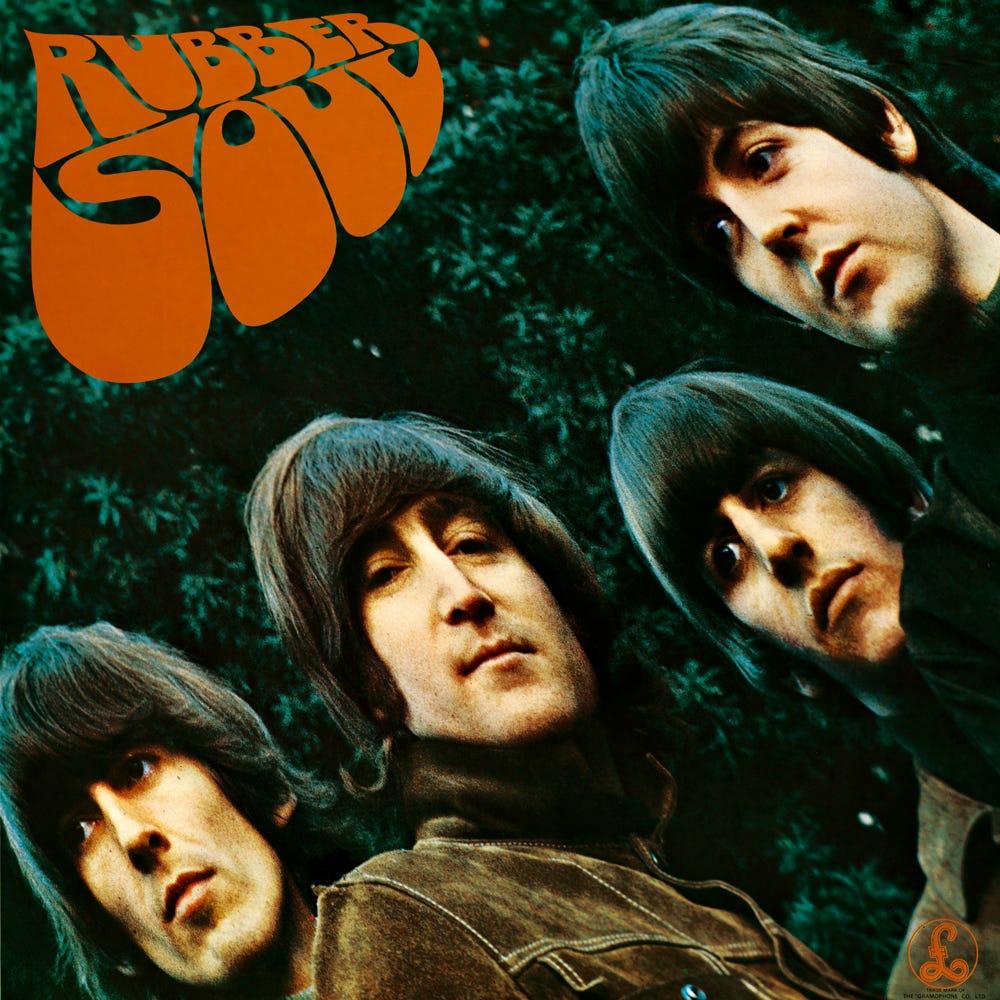It has taken almost 11 months, but finally, we arrive at the first entry of the biggest band in popular music. This will be the first of five appearances between now and October; over that time, Bob Dylan has three, The Jimi Hendrix Experience two and no one else has more than one. That’s how dominant The Beatles are, even in Rolling Stones’ Top 500 album update in 2020, the one with Stevie Wonder, Kanye West, Kendrick Lamarr and Marvin Gaye in the upper echelons that spoke to a demographic shift in the voters - they still retained five albums in the top 35.
So it is a slight disappointment they should arrive with one of the worst songs of their short recording career.1 It is hard to find much to like about ‘Run For Your Life’; John Lennon had practically disowned it in the 1970s. I will not gloss over the lyrics, we will get to those, but If I do so for the rest of this paragraph, can I at least find something nice to say about the backing? No - not really; there’s little to praise there either. I wish that Rubber Soul ended with something a lot less controversial like ‘12-Bar Original’.
“Run for Your Life” was the first song the quartet committed to tape on returning from a US tour in which they played at Shea Stadium and met Bob Dylan and Elvis Presley. It is, in fact, Elvis that is the jumping-off point for this song as the opening line ”I'd rather see you dead, little girl, than to be with another man” is from ‘Baby, Let’s Play House’.
Sometimes you can talk about the undertone of a song, something it says without saying. ‘Run For Your Life’ flat-out puts the misogyny on display for everyone to see. It is a jealous, possessive lecture from a man to a woman that even recognises it sounds like a sermon delivered from a pulpit. It threatens the woman with death if she ever committed infidelity and says she should be looking over her shoulder if she did. The song's light and breezy country and western sway from Ringo Starr can’t disguise the Old Testament-style threat hanging over the girl in question. If that weren’t bad enough, and it is, the song is a mess in other ways. The guitar solo is rushed and out of tune2; Lennon is so close to the microphone you can hear his vocal ‘pop’ on more than one occasion.
In defence of Lennon, he would later all but disown the song. Presumably, the influence of Yoko Ono was at play here, and his attitude toward women had changed from when he was with Cynthia Lennon and also wrote other slightly dubious lyrics as found on ‘I’ll Cry Instead’ and ‘You Can’t Do That’ from A Hard Day’s Night. A song like 'Woman' seems an apparent attempt to redress the balance in what would turn out to be the last few months of his life.
In 1970 Lennon told Rolling Stone;
I never liked ‘Run For Your Life’ because it was a song I just knocked off. It was inspired by a vague connection – from ‘Baby, Let’s Play House’. There was a line on it – I used to like specific lines from songs – ‘I’d rather see you dead, little girl, than to be with another man’ – so I wrote it around that, but I didn’t think it was that important.
He’d also call it his least favourite song by the band and always hated it. He does say in another interview in 1973 that George Harrison likes the song, and the gang do play it during the Get Back/Let It Be recording sessions, as seen in last year’s documentary.
Paul had an interesting view on Lennon’s mindset at this point, which I find hard not to chuckle at.
John was always on the run, running for his life. He was married; whereas none of my songs would have ‘catch you with another man’. It was never a concern of mine, at all, because I had a girlfriend and I would go with other girls; it was a perfectly open relationship so I wasn’t as worried about that as John was. A bit of a macho song.
Here’s a gender reversal version from Nancy Sinatra in 1966 who makes a decent stab at doing something a little different with it.
So not the best start for our Beatle endings, but there is better to come in a few weeks for us, and later the same day, they started work on a song that would mark the beginning of the next stage of the band’s evolution; ‘Norwegian Wood (This Bird Has Flown).’
Next week: The Jimi Hendrix Experience and Prince
It always amazes me how busy they were. They played 1,400 gigs between 1961 and 1966 and recorded seven albums, seven stand-alone singles and two films. Not content with putting out a double album in late November 1968, the Get Back project plan is to rehearse and perform another album by the end of January 1969 of new material!
It is also simplistic that leads Ian McDonald to speculate in Revolution In The Head that it is Lennon and not Harrison that is playing it.




